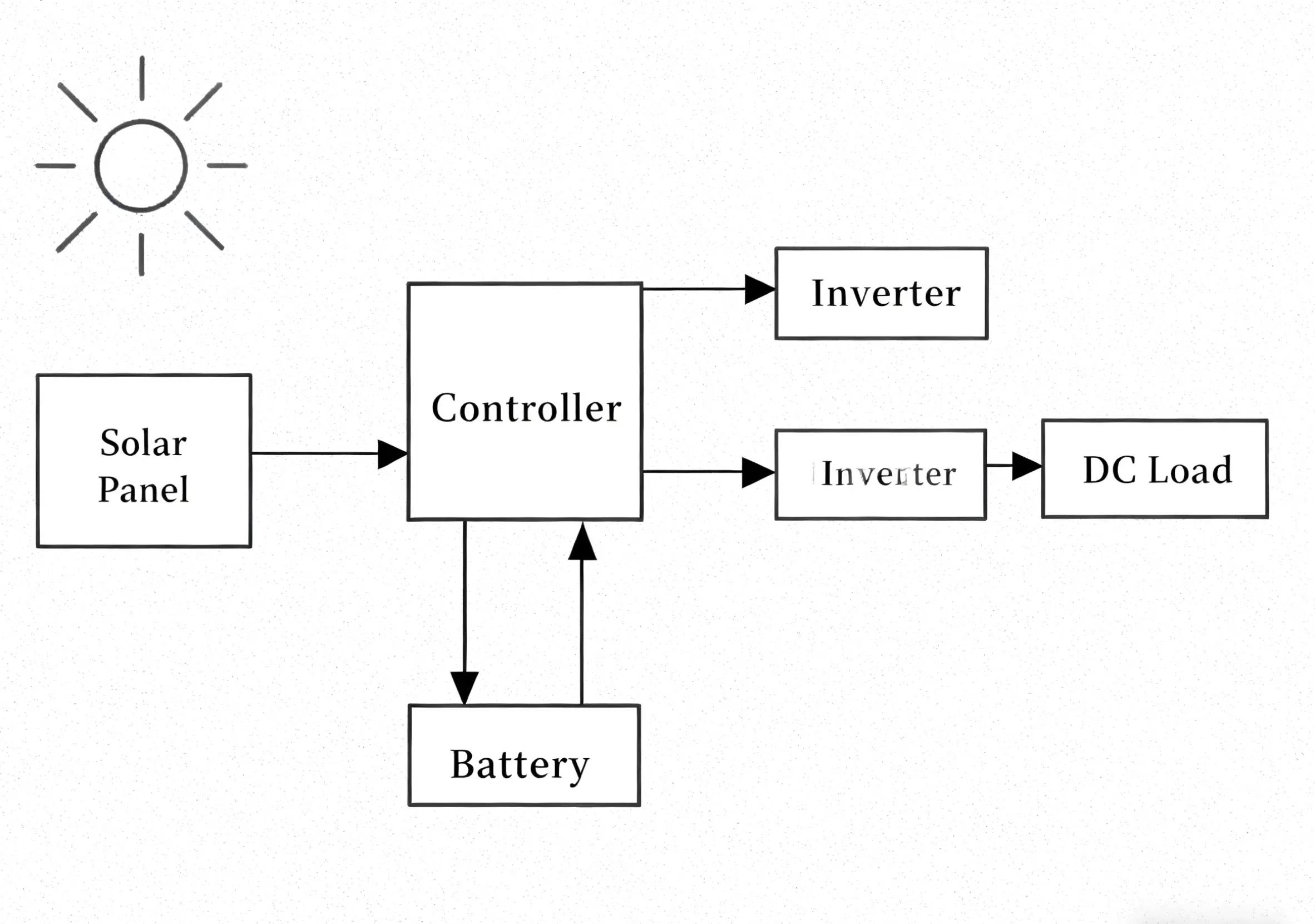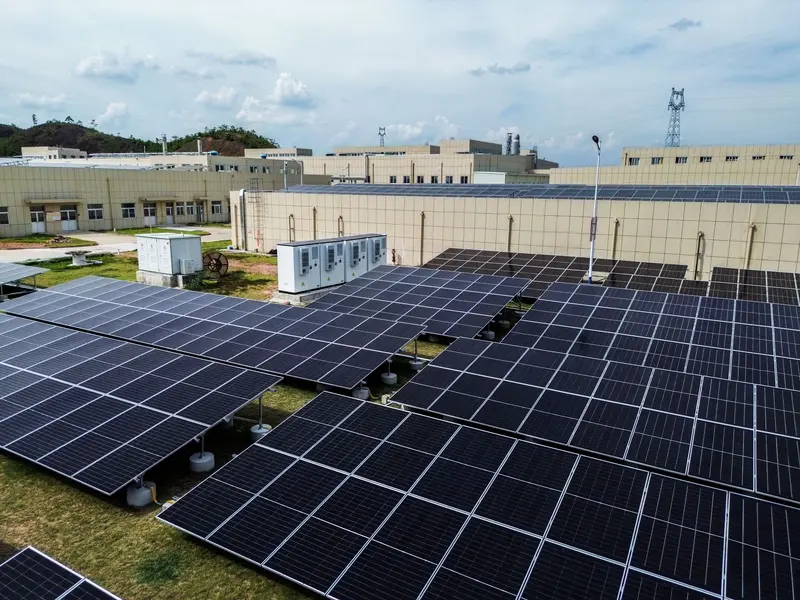If you are running a factory, hotel, warehouse, park project, or building a temporary project in a remote area, you will definitely find--
The current electricity consumption is more anxious than at any time in the past.
Electricity prices are getting higher year by year, and peak electricity prices make profits quietly swallowed up;
The power grid trips from time to time, equipment shutdown, order delays, employees waiting for work...
The remote project is more troublesome - the power grid can't be connected at all, and the project is forced to be delayed again and again.
No wonder more and more enterprises began to ask:
"Is there a plan that we can produce with peace of mind without relying on the power grid?"
This is the reason why the Commercial Off-grid Solar System is popular.
I. Why do enterprises need commercial off-network systems more than ever before?
commercial off-network systems is not an "enlarged version" of the home off-grid system, but a set of energy solutions specially designed for enterprise scenarios--
It is more stable, more powerful, and can carry the continuous operation of equipment, which can also reduce the energy cost risk of enterprises.
In other words, a set of commercial off-grid systems solves the three core pain points of today's enterprises:
High electricity prices → It is cheaper and more controllable to use your own electricity
The power grid is unstable → the equipment cannot be stopped, and the order cannot be waited
Construction in areas without electricity → Construction can be started directly without relying on the power grid
If these problems are bothering you, then continue to look down, and you will find a solution that makes the enterprise more stable, more economical and more independent.
II. What is a commercial off-grid solar system? What kind of system does an enterprise need?
Commercial off-grid solar systems are a set of power generation and energy storage systems that do not depend on the power grid at all, which usually consists of the following parts:
1. Enterprise-level solar photovoltaic array (20–500kWp)
Use high-efficiency N-type components
Frames, brackets and wiring all need industrial grade.
Support large-area layout and rapid deployment
2. Industrial and commercial energy storage system (50–500kWh or customized)
This is the core of the commercial off-network system, accounting for 40%-60% of the system cost.
Requirements:
Long-life lithium battery (LFP)
Liquid cooling system (reduce temperature difference and extend life)
High magnification discharge capacity
Security Management System (BMS)
Intelligent EMS power scheduling
3. Industrial and commercial inverter / PCS (20–500kW)
It is used for energy conversion between solar energy, batteries and loads.
Requirements for commercial off-grid inverters:
Support "three-phase load"
Start-up of industrial pump
Automatic switching
Black start-up ability
4. Structured installation and monitoring system
Including:
Power distribution cabinet
Circuit breaker
Parallel equipment
Monitoring platform (APP + Web)
5. Can it be completely disconnected from the power grid? How long can it run?
Answer: Yes, but it depends on the energy storage capacity.
Usually selected as:
Daytime: solar power supply + battery charging
At night: energy storage and power supply
Rainy days: energy storage support (can be equipped with an additional diesel engine as an "emergency standby")
For areas with high electricity prices, the operating cost is about 60% lower than that of diesel engines.
 III. What is the cost of a commercial off-grid system?
III. What is the cost of a commercial off-grid system?
The following is a breakdown of costs and a budget range (based on industry averages):
1. Cost Structure
Component Proportion Description
PV Modules 20% – 30% N-type high-efficiency modules, mounting structures, cables, etc.
Industrial & Commercial ESS 40% – 60% Largest part of system cost; liquid-cooled batteries are more expensive but longer-lasting
Industrial Inverter 10% – 20% PCS, controller, distribution system
Civil Works & Installation 10% – 20% Foundation construction, labor, commissioning and grid connection
Smart Monitoring System 5% EMS platform and system integration
2. Typical budgets of systems of different scales
✔ 50kW + 100kWh energy storage
→ Suitable for: communication base stations, small factories
→ Budget range: USD 65,000 – 85,000
✔ 100kW + 250kWh energy storage
→ Suitable for: farms, pumps, logistics warehouses
→ Budget range: USD 110,000 – 160,000
✔ 250kW + 500kWh energy storage
→ Suitable for: mining areas, manufacturing industries, resorts
→ Budget range: USD 260,000 – 380,000
✔ 500kW + 1MWh energy storage
→ Suitable for: large-scale industrial and cold chain centers
→ Budget range: USD 540,000 – 780,000
(The cost will vary depending on regional labor costs, exchange rate fluctuations, etc.)
IV. How much money can a commercial off-network system save for enterprises?
The final question of the enterprise is always: "Can it save money by installing this?"
The answer is: yes, and it is much more economical than diesel engines.
1. Commercial electricity price vs self-generating cost
In most countries:
Commercial electricity price: 0.15–0.35 USD/kWh
Peak electricity price: 0.28–0.50 USD/kWh
Diesel power generation: 0.30–0.45 USD/kWh
Commercial off-grid solar energy: 0.06–0.10 USD/kWh
The gap is very obvious. The cost of solar self-generation is only 1/3-1/4 of the electricity price.
2. Payback period for commercial off-line system investment
Average recovery cycle: 3–6 years.
High-price areas: It can be returned in 2–4 years.
V. Which businesses are best suited for commercial off-grid solar systems?
The following application scenarios represent the most essential and typical commercial off-grid users:
Application Scenario Why an Off-grid System is Needed Value Delivered by Off-grid Solar System
1. Remote Telecom Base Stations • Sites are remote with no grid or unstable power
• High diesel costs, logistics, and maintenance • 24/7 power supply
• Significant OPEX reduction
• Improved network reliability
3. Warehousing, Logistics Parks, Cold-chain Centers • Suburban sites with weak grid
• Cold rooms need absolute continuity
• Outages cause heavy cargo losses • Primary or backup power
• Prevents cold-chain breaks
• Peak-shaving to lower electricity bills
4. Island Hotels, Resort Service Stations • Island power prices 2-3× mainland
• Diesel gensets noisy & costly
• Energy cost drives profitability • Clean substitute for diesel
• Lower OPEX, higher margins
• Silent, emission-free, better guest experience
5. Factories & SME Manufacturers (grid-unstable regions) • Outages halt production
• Frequent “peak-load shedding”
• Commercial tariffs keep rising • Energy independence
• Load-shifting to cut peak charges
• Ensures continuous output
6. Construction Sites / Temporary Projects • High, short-term power demand
• Grid connection slow & expensive
• Diesel gensets loud & polluting • Rapid-deploy clean power station
• 40–60 % lower running cost vs. diesel
• Re-usable, movable after project end
VI. Real cases
Case: Romania 500kW/1075kWh and off-grid micro-network energy storage system
Background:
In Romania and surrounding areas, the use of new energy vehicles is growing rapidly, but many local regional power grids are weak and cannot even meet the needs of charging station construction. In order to provide stable green energy replenishment in areas without/weak electricity, local customers plan to deploy a set of mobile photovoltaic energy storage and charging systems to achieve real off-grid charging and on-demand deployment.
Therefore, a 500kW/1075kWh and off-grid microgrid system composed of photovoltaics, energy storage and charging piles has become the best solution.
Installation scale:
Photovoltaic installed capacity: 184 kWp · Configuration: 5 photovoltaic inverters Energy storage capacity: 500 kW/1075 kWh Equipment: 5 100kW/215kWh Energy storage cabinets Mobile photovoltaic containers: 4
10-foot folding structure, convenient for transportation and rapid deployment of two-way 500kVA STS (static switching switch) 2 sets to ensure stable and seamless switching between photovoltaics, energy storage, power grid and generators
VII. Why is it important to choose a professional manufacturer?
The difficulty of commercial off-network systems is much higher than that of home systems, and the complexity can even reach more than ten times that of the latter. The reason is that enterprise-level off-grid projects should not only meet the daily power supply, but also take into account a variety of key requirements, such as:
1.Scientific layout and power generation efficiency optimization of large-scale photovoltaic arrays
2.Safety design and thermal management of large-capacity energy storage system
3.Load matching and power scheduling at the industrial and commercial level
4.After the pavilion is electric, it has the ability to quickly recover the black start.
5.The stability of multiple devices running in parallel
6.System-wide protection strategy, monitoring and scheduling logic
For this reason, when choosing off-network systems, enterprises are often more inclined to choose technical manufacturers with real practical experience, rather than suppliers who only sell simple components.
Take LZY Energy as an example, it is one of the few enterprises in the industry that can provide "one-stop off-grid solutions".
More than 20 years of deep cultivation in the field of new energy and communication
Global service photovoltaic energy storage system supplier products cover industrial and commercial energy storage, photovoltaic modules, inverters, outdoor cabinets, portable energy storage and other complete systems to support the deployment of 20kW-1MW off-grid and microgrid systems.
With an independently developed EMS energy management system, it can realize intelligent scheduling and energy efficiency optimization to provide global delivery capabilities and professional technical services.
It is precisely because of the full-link strength from research and development, manufacturing to project implementation that manufacturers like LZY Energy can ensure that commercial off-network systems can truly achieve stable, safe, long-term and reliable operation.
You can learn more about their products through the following link:
Photovoltaic modules
Foldable photovoltaic containers
Energy storage batteries
Commercial inverters
Choosing a professional manufacturer means:
The project is safer
More reasonable configuration
The system is more efficient
After-sales service is guaranteed
The return on investment is more predictable
VIII. Why are enterprises worth deploying commercial off-grid solar systems?
A summary of a sentence:
The commercial off-grid system not only saves electricity bills, but also helps enterprises obtain controllable, sustainable and uninterrupted energy.
For any industry that is highly dependent on electricity, it can solve:
✔ Power outage risk
✔ High energy consumption cost
✔ Difficulties in power supply in remote areas
✔ High cost and emission problems of diesel engines
✔ Peak electricity price pressure
✔ The risk of interruption in production and operation
Against the global background of continuous rise in energy prices, this is an investment that combines cost-effectiveness, stability, environmental protection and long-term value.
Contact us to get a quotation
If you are looking for a reliable and stable off-grid solar power generation solution for your enterprise, we can provide you with complete design, customization and deployment services.
Click contact us for professional quotations and project evaluations.

